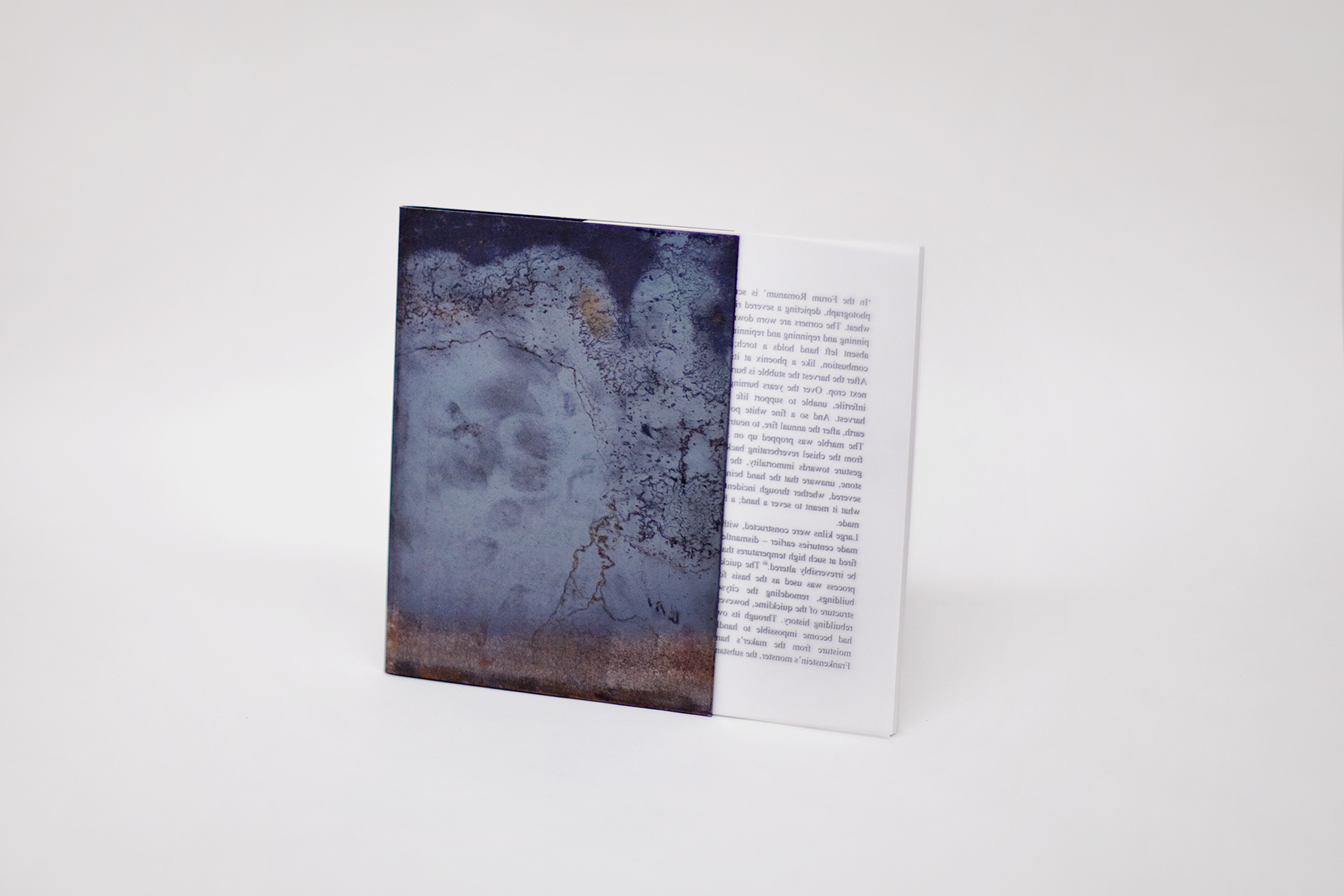After Firing
After Firing (2015)
‘In the Forum Romanum’ is scrawled on the back of the photograph, depicting a severed right hand holding a sheaf of wheat. The corners are worn down, from decades of the artist pinning and repinning and repinning.[1] According to legend, the absent left hand holds a torch; a duality of growth and combustion, like a phoenix at its point of metamorphosis.[2] After the harvest the stubble is burned, clearing the land for the next crop. Over the years burning makes the soil acidic and infertile, unable to support life due to its own history of harvest. And so a fine white powder is deposited over the earth, after the annual fire, to neutralise the soil.
The marble was propped up on sandbags to stop vibrations from the chisel reverberating back into the artist’s hand. In a gesture towards immortality, the artist chipped away at the stone, unaware that the hand being carved would one day be severed, whether through incident or intention. It was asked what it meant to sever a hand; a hand that is both maker and made.
Large kilns were constructed, with buildings and sculptures – made centuries earlier – dismantled and stacked inside, to be fired at such high temperatures that their chemical state would be irreversibly altered.[3] The quicklime produced through this process was used as the basis for the construction of new buildings, remodelling the cityscape. The new chemical structure of the quicklime, however, undermined the desire for rebuilding history. Through its own process of production it had become impossible to handle, reacting violently with moisture from the maker’s hands, burning them.[4] Like Frankenstein’s monster, the substance awakened.[5]
[1] A photograph was taken by Wolfgang Sievers in 1953 while travelling through Rome. Unlike many of his other works, there is only one known print in existence, and no negative.
[2] The hand in the photograph has been identified as that of Ceres, goddess of agriculture.
[3] Hundreds of millions of years ago, broken down seashells gathered at the bottom of the ocean. The pressure of the water above compacted the sediment to form limestone. Further pressure, and high temperatures caused a metamorphosis, resulting in marble. Seashells, limestone and marble are all forms of calcium carbonate. When fired, the carbon dioxide trapped inside is burned away, transforming the calcium carbonate into calcium oxide, or quicklime. CaCO3(s) → CaO(s) + CO2(g)
[4] Quicklime has a very high pH, making it an alkaline. When it comes into contact with water a chemical reaction takes place, resulting in temperatures as high as 800C. CaO(s) + H2O(l) → Ca(OH)2(s)
[5] The etymology of the word ‘quick’ is to be ‘alive’ or ‘living’.
After Firing was published alongside the project of the same name. It features riso printed drawings, in a custom steel sleeve cover. After Firing is an edition of 50.





